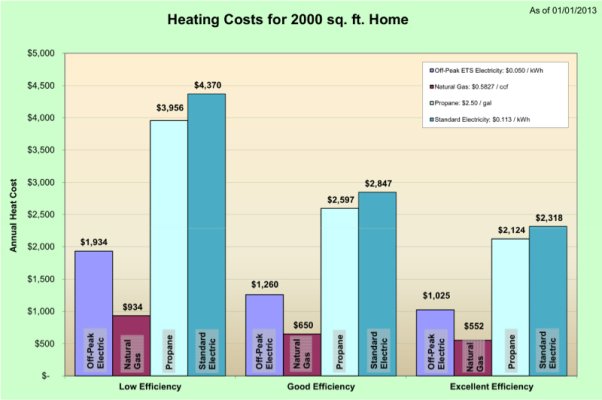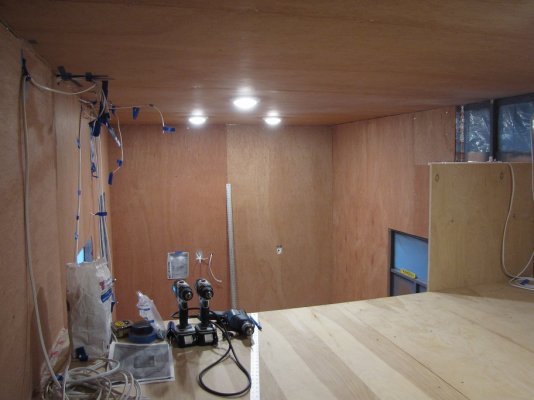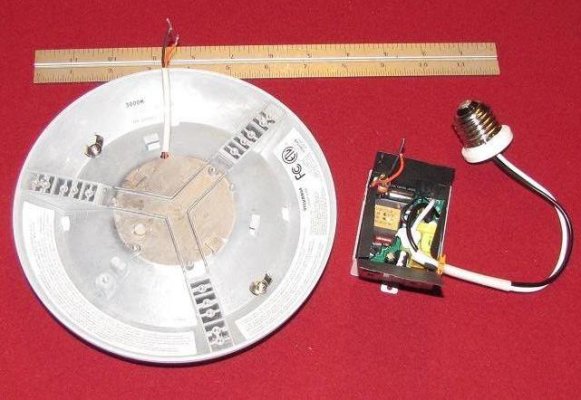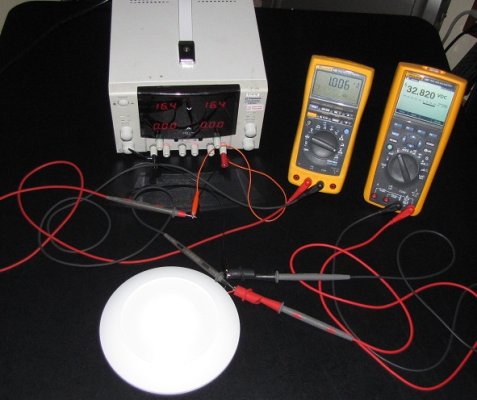Are you saying that LEDs have the same efficiency as CFLs? I don't think so.
Compare: LED Lights vs CFL vs Incandescent Lighting Chart
The equivalent LEDs I've looked at are pretty close in electric consumption to the CFLs.
For instance:
Cree 13.5W TW Series Soft White LED Bulb - Smart home - CNET Reviews
Or the first LED in this thread:
Home Depot Ecosmart 9 Watt (65W) BR30 Soft White (2700K) LED Flood Light Bulb
650 Lumen, Life 22.8 years based on 3 hrs./day
SKU184-441, UPC 887437000694, $15.88 and still the same price today in HD stores
The FEIT CFLs I referenced from Costco:
13W 900 Lumen, average life 10,000 hours (@ 3 hours/day = 9.1 years) 2700K, advertised as RoHS compliant, contrary to your chart's assertion on CFLs. $0.75/bulb
So the Ecosmart LED puts out 72% of the lumens but only uses 69% of the energy and lasts 2.5 times as long? But costs 21 times as much?
If instant on is really important and your bulbs are not at risk and they are located in really awkward locations for changing and you believe the LED lifespan claims then by all means have at 'em.
I'll defer to Fermion's comment early in the thread:
Not that it probably makes a difference or many of you care, but it is the electronics that are failing in the LED bulbs, not the LED element itself. I opened up 7 failed bulbs and found the LED elements to be perfectly fine. They are wired as a series string of about 12 LEDs per string...sometimes two parallel strings of 12 LEDs. It takes about 22 volts for most of these to get to the knee in the diode conduction curve and they run on around 36V DC.
The buck converter which takes in 115VAC and outputs the 36V DC uses things like capacitors with a 1000 hour or 2000 hour typical life for rated spec (and this is usually for moderate temperatures...shorter life at higher temps). All of the units were potted and I was too lazy to try and dig out the potting to figure out exactly what failed, but I am guessing it was these capacitors degrading, causing some sort of change in the buck converter. This either blew the converter chip or perhaps popped a non-resettable fuse in the lamp guts.
Sorry if this was TMI. I love the LED lights but I buy them expecting only to get 2000 to 3000 hours out of them. I am going to make a huge 5000 watt LED spotlight someday out of all of these broken elements.





